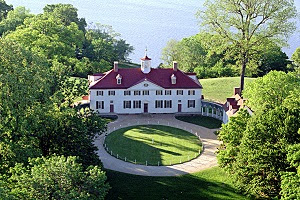Colorado Springs and the Pikes Peak Region
Nestled at the
base of the Rocky Mountains, visitors to Colorado Springs can enjoy commanding
views of Pikes Peak from just about any part of town. The multiple recreational
opportunities afforded by the nearby mountains include everything from hiking
to taking in the breathtaking geological wonders at Garden of the Gods Park,
Cave of the Winds and the Paint Mines Interpretive Park.
Colorado Springs has a Thriving
Arts and Cultural Scene
History the area’s first inhabitants were American Indian
people. The Ute, Cheyenne, Arapaho and other tribes gathered at the base of
Pikes Peak, near its abundant springs. During the 18th Century both
French and Spanish flags flew over the region. But with the Louisiana Purchase
more Anglo-American explorers and settlers began to venture west. In 1859, Colorado
Springs history is marked with the founding of Colorado City which became the
first settlement in the Pikes Peak region. It was the territorial capitol for a
short period and served as a supply camp for miners traveling to the mining
camps west of Denver.
By 1871, the Denver and Rio Grande
Railroad facilitated visits to a Victorian
spa resort town at the base of Pikes Peak. The stunning scenic beauty was
not the only thing that attracted people to the area. The sunny conditions and
dry, mild climate of Colorado Springs made these communities popular for people
suffering from poor health, especially tuberculosis.
Gold was discovered on the western slope
of Pikes Peak, one of the richest gold strikes in American history. Almost
overnight, the Cripple Creek Mining District grew from an isolated cattle
pasture to the home of more than 50,000 people. By the turn of the 19th
century, Colorado Springs was called the city of millionaires.
Since the 1940s, Colorado Springs
has been home to major military installations including Fort Carson, Peterson
Air Force Base, the U.S. Space Command, NORAD, Schriever Air Force Base and the
United States Air Force Academy.
Colorado Springs is a National Trust for Historic
Preservation Distinctive Destination
Colorado
Springs was
selected for its walkable historic areas, its commitment to sustainability and
its natural attractions and ample recreational opportunities in the nearby
Rocky Mountains. Activities range from family itineraries to
educational, cultural and a wide range of outdoor programs: rafting, biking,
rock climbing, horseback riding and fishing.
Planning Your Trip assumes uniquely local dimensions wherever you go; the activities that you, the visitor – local, or global – select and irrespective of the length of your stay, are unique of the community you are visiting and rooted into the local economy, history and traditions.
Train Rides experience scenic beauty and historic travel
aboard the Broadmoor's Manitou & Pikes Peak Cog Railway, the Royal Gorge
Route Railroad and Cripple Creek & Victor Narrow Gauge Railroad.
Food Tours enjoy culinary secrets in
the heart of Downtown Colorado Springs or Historic Manitou Springs at six
diverse dining locations serving unique food and drink tastings.
Art Galleries and Shopping for over a century, artisans have
been inspired by the amazing beauty of Colorado Springs and the Pikes Peak
region. Local art can be found in
one-of-a-kind boutiques, discount stores and world-famous chains.
Museums Step back in time and explore the Wild West at the
Pioneers Museum or Outlaws and Lawmen Museum. Enjoy the art and culture
at the Colorado Springs Fine Arts Center. A variety of experience ranging
from space and aviation to natural history, railroads and ghost towns.
Sports Colorado Springs is home of the U.S. Olympic Committee and
Training Center. The high altitude, pleasant climate and natural beauty
make training or competing here a unique location for your team and sport.



















